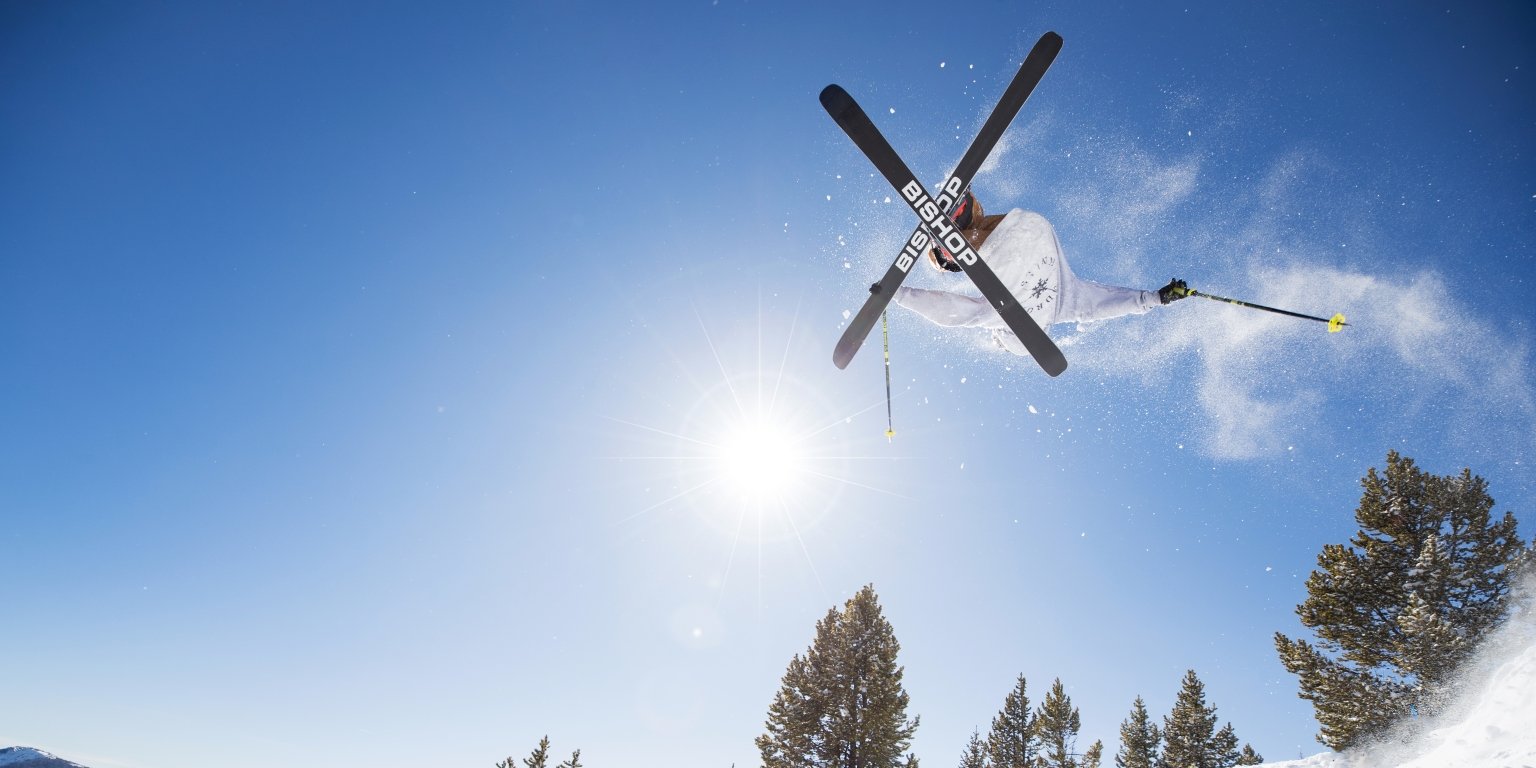Gear Profile: Turning Point For Bishop Telemark
Photos by Bjorn Bauer
Dave Bombard fell in love with skiing at 45-acre Ward Hill (now Ski Ward), situated 9 miles outside Worcester, Massachusetts, when he was just 5 years old. His downhill prowess progressed over the years — he even skied on a freestyle team — but, except for occasional outings on cross-country skis, he remained loyal to his alpine bindings. That changed in 1996, when Bombard took a few gap years as a ski instructor between finishing a master’s degree in mechanical engineering and starting an engineering job in California. Curious about telemark skiing — that alternate downhill technique where the back foot provides balance while the front foot drives the ski into a turn — he took a lesson. It changed his life.
Now, as the owner and lead product designer of Edwards, Colorado-based Bishop Telemark, his world revolves around that form of turning on two skis. It’s far from the course he thought his career would take, but after a decade in the ski industry, he’s glad his path carved the way it did. “Innovation is my passion,” he says. “I love to telemark ski, but the big reason I got into it was to create a company that’s doing innovative things in the sport of skiing, based in the Vail Valley and supporting employees and the local economy here.”
Bombard admits that his first telemark lesson wasn’t love at first knee-drop — it was primarily a means to an end. Back in the early 2000s, before alpine touring equipment became readily available, free-heeled telemark bindings were the primary option for anyone willing to earn their turns in the backcountry. And Bombard, who was working as a surgical instrument product designer outside of San Francisco at the time, was eager to explore the generous powder stashes surrounding Lake Tahoe.
Learning to telemark turn in the inconsistent conditions out of bounds wasn’t easy. “I had many spectacular crashes,” he laughs. “I remember one, they called it the ‘wheel of destruction.’ I f lipped over multiple times. My ski came up, and it smashed me in the nose. I still have the scar.”
In 2007, a series of job changes brought him to the Vail Valley, along with his wife and their pup Chedi (the Bishop Telemark Chedi is named after this Bernese mountain dog). That venture funded, medical device project fizzled out, but Bombard’s love for life in the mountains had been reignited. It was worth piecing together consulting work and start-up projects to stay.
During this time of professional flux, Bombard met Fin Doyle, an expert machinist and owner of snowsports brand Bomber Industries. Doyle had introduced a telemark ski binding back in the early 2000s, but then discontinued it in 2007. Bombard and Doyle initially worked as partners to revive that telemark binding, but when Doyle decided to exit the partnership to pursue other ventures in 2012, Bombard was faced with a choice: Remain in the medical device industry, where he designed surgical instruments used in sterile operating rooms, or transition out and try his hand at creating products meant for varying weather conditions across highly non-sterile ski fields.
Bombard took the plunge. His first five years at Bishop Telemark were focused primarily on further refining Doyle’s original Bishop telemark binding. During the fall of 2017, he and a small team of local engineers fresh out of school designed and launched the next generation of telemark bindings: the resort-focused BMF/3 and the touring-ready BMF/R. Both bindings come with what the brand calls its Bomber Lifetime Guarantee, which means they’re covered from manufacturer defects for the life of the binding when purchased directly from Bishop Telemark or an authorized dealer.
A few years later, at the suggestion of a friend, Bombard added a ski to the Bishop Telemark lineup. He started with one model in two lengths and only produced it in “very limited numbers,” Bombard says. Eventually though, he realized the potential for a telemark-specific ski. After all, telemark turns are very different from alpine turns, and their bindings attach to a ski differently than their alpine counterparts. “It opened up this opportunity,” Bombard says, “to design a ski that was really unique and specific for telemark.”
His innovation came to fruition in the proprietary Telem-Arc Technology, which optimizes the geometry, flex and construction of a ski for the quad-busting dynamics of a free heel turn. Today, the brand sells as many skis as it does bindings.
The telemark segment of the ski industry pie has always been tiny — it still is — but Bombard has a bullish outlook on the future. He’s targeting increased sales for this winter season and has a new binding in the hopper. He’s in the process of prototyping a new ski. There’s also one undeniable fact that Bombard has in his favor, he says: Whatever trick you can do on alpine skis, “if you can do it on telemark skis, it’s harder — and maybe a little bit cooler.”
Originally published in the Winter 2024-25 issue of Spoke+Blossom.




